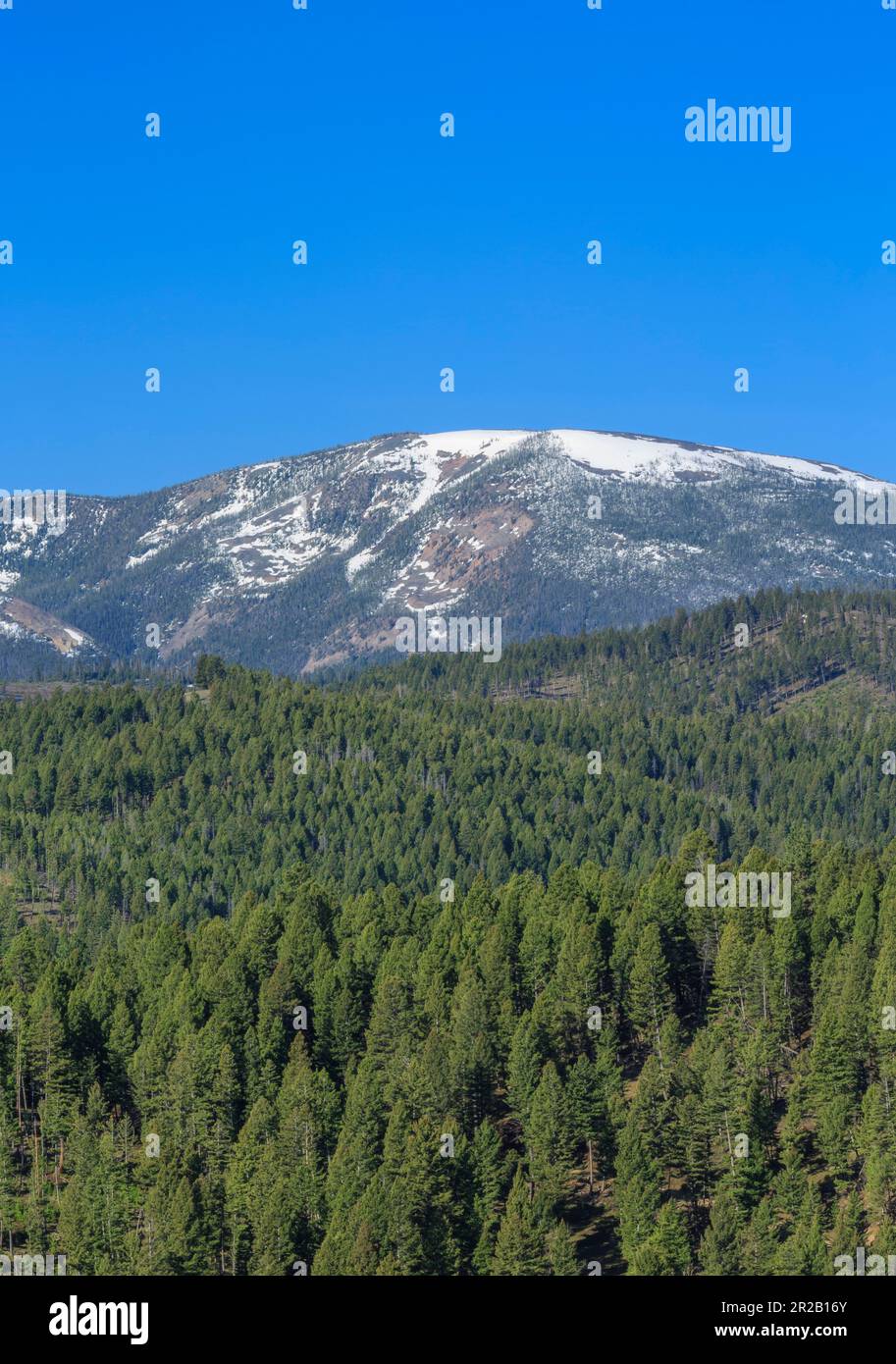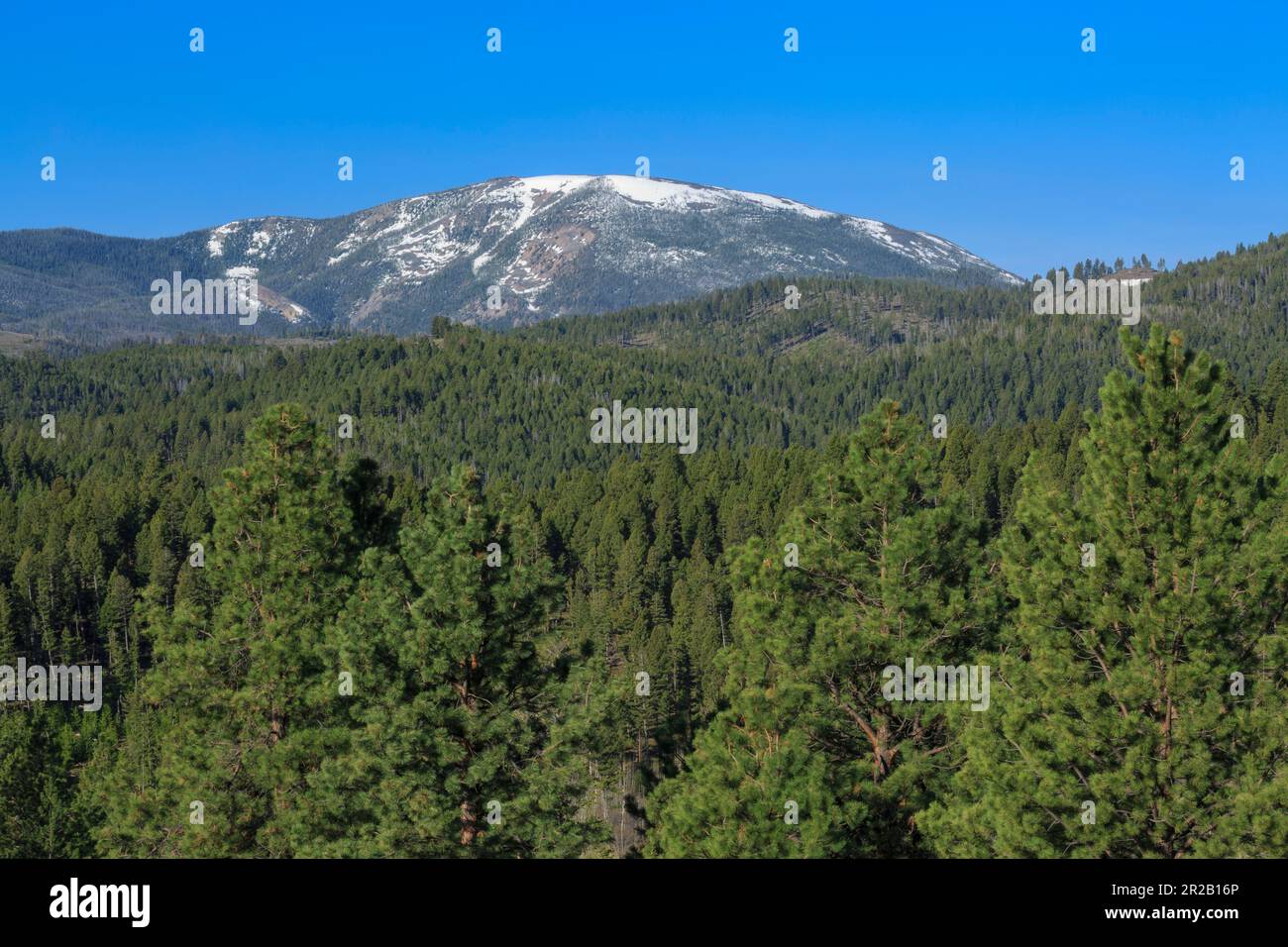
Echoes in the Peaks: Unearthing America’s Legends from Rimini to the Coasts
America, a nation often characterized by its youth and forward gaze, paradoxically possesses a tapestry of legends as rich and complex as any ancient civilization. These are not merely quaint folktales; they are the bedrock of its identity, etched into the landscape and whispered through generations. From the colossal figures of frontier lore to the spectral inhabitants of forgotten towns, these narratives reflect a nation’s hopes, fears, and the relentless spirit that forged it. To truly understand the enduring power of American legends, one must journey beyond the well-trodden paths, venturing into places where the past still breathes – places like the rugged, history-laden slopes surrounding Mt. Rimini in Montana.
Nestled within the Helena National Forest, near the Continental Divide, Mt. Rimini isn’t a household name in the pantheon of American myth like Bigfoot or Paul Bunyan. Yet, it is precisely in such overlooked corners that the true essence of American legend can be found. Rimini, and the ghost towns that dot its foothills like Marysville, Rimini, and Bald Butte, are not just relics; they are living testaments to an era of unbridled ambition, sudden wealth, and often, tragic loss. They embody the very spirit that birthed countless American legends: the relentless pursuit of fortune, the struggle against an unforgiving wilderness, and the indelible marks left by human endeavor.
The story of Rimini begins, as many American legends do, with gold. In the late 19th century, Montana was a magnet for prospectors, a rugged frontier promising untold riches. The discovery of gold and silver in the Rimini district in the 1880s ignited a furious boom. Towns sprung up overnight, their streets teeming with miners, saloon keepers, gamblers, and dreamers. The Gloster mine, in particular, became a significant producer, drawing thousands to this remote corner of the Rockies. Life here was raw, brutal, and utterly captivating. It was a place where fortunes were made and lost in a single hand of cards, where justice was often swift and harsh, and where the line between the living and the dead frequently blurred.
It is amidst these skeletal remains of cabins, collapsing mine shafts, and silent streets that the legends of Rimini truly reside. While no specific, widely circulated "Rimini monster" or "Rimini lost treasure" myth dominates the national consciousness, the atmosphere itself is legendary. Locals and visitors alike speak of the palpable presence of the past. The whispers carried on the wind through abandoned structures, the creaking of timbers that once echoed with the shouts of men, the profound silence that now blankets the valleys – all contribute to a powerful sense of lingering spirits. One can almost hear the phantom pickaxes striking rock, the distant strains of a saloon piano, or the mournful cry of a miner trapped deep underground. These aren’t just ghost stories; they are the collective memory of a community, imprinted upon the very landscape. The legend here is the experience of being in a place where so much human drama unfolded, a tangible connection to the American dream’s grittier, more perilous side.
This micro-legend of Rimini is a perfect lens through which to view the broader panorama of American legends. The foundational myths of the nation often emerge from the collision of human ambition with the vast, untamed wilderness. Paul Bunyan, the colossal lumberjack whose feats of strength carved out lakes and forests, is the quintessential embodiment of this struggle. He represents the superhuman effort required to tame a continent, a myth born from the awe and fear inspired by America’s immense natural resources. Similarly, Johnny Appleseed, the gentle pioneer who spread apple seeds across the burgeoning frontier, symbolizes the nurturing, civilizing aspect of westward expansion, a counterpoint to Bunyan’s raw power. These figures, like the miners of Rimini, were engaged in the monumental task of shaping a new world.
As the frontier pushed ever westward, new legends emerged, reflecting the unique challenges and characters of the American West. Pecos Bill, the cowboy who rode a cyclone and lassoed a rattlesnake, personifies the exaggerated bravado and rugged individualism of the cowboy era. His stories, like those of Rimini’s boom-and-bust, are tales of larger-than-life figures grappling with an equally immense landscape. The allure of gold, too, extended far beyond Montana, giving rise to countless legends of lost mines and buried treasures – from the Lost Dutchman’s Gold Mine in Arizona to the various tales of pirate hoards along the Atlantic coast. These are the dreams of instant wealth, forever tantalizing, forever just out of reach, much like the elusive veins that eventually played out around Rimini.
Beyond the heroes and the quest for riches, America’s legends also delve into the shadows – the fears born from the unknown and the unexplained. The vastness of the continent, with its dense forests, remote mountains, and uncharted territories, provided fertile ground for tales of cryptids and monstrous entities. Bigfoot, or Sasquatch, is perhaps the most famous of these, a reclusive ape-like creature said to roam the Pacific Northwest, its legend fueled by blurry photographs and fleeting encounters. The Mothman of West Virginia, a winged humanoid associated with ill omens and a bridge collapse, represents a more modern, urban legend, blending folklore with Cold War anxieties and technological fears. These creatures, much like the implied "ghosts" of Rimini, serve to personify the lingering mysteries of places where human understanding still falters. They are a reminder that despite all our advancements, there are still corners of America that retain their primal, untamed mystique.
Crucially, any discussion of American legends must acknowledge the deep roots of Indigenous storytelling that predate European arrival by millennia. Native American legends are intrinsically tied to the land, offering origin stories, moral lessons, and explanations for natural phenomena. The Wendigo, a malevolent spirit of the Algonquian people, embodies greed and cannibalism, a chilling cautionary tale about the dangers of excess. The Thunderbird, a powerful spirit of storms and creation, is revered across many tribes. These narratives imbue the very mountains and rivers with profound spiritual significance, a layer of meaning that often clashes with, or sometimes subtly merges into, settler folklore. The land around Rimini, for instance, was once the ancestral home of various tribes, including the Salish, Kootenai, and Blackfeet. Their legends speak of a time when the mountains were not just repositories of gold, but sacred spaces, inhabited by spirits and imbued with ancient power. This rich Indigenous heritage adds a profound depth to the American legendary landscape, reminding us that the land itself has always been alive with stories.
What makes these legends endure? Why do we continue to tell and retell stories of phantom miners, giant lumberjacks, and elusive forest creatures? Perhaps it is because they serve as more than mere entertainment. They are a means of processing history, of understanding our place in the world, and of articulating our collective hopes and anxieties. They are cautionary tales and inspirational sagas, reflecting the continuous negotiation between humanity and the wild, between ambition and consequence. In a nation built on movement and change, legends offer a sense of continuity, a shared heritage that binds diverse communities.
The silent streets of Rimini, where the wind whistles through empty windows and the rust-colored tailings of the mines stand as monuments to a bygone era, are a powerful testament to this enduring power. Here, the legends aren’t just written in books; they are etched into the very fabric of the landscape. They are the echoes of a million dreams, shattered and fulfilled, that shaped not only a mining district but an entire nation. The tales of forgotten pioneers, the allure of lost gold, the spectral figures said to linger in the deserted buildings – these are the stories that remind us of the immense human cost and boundless ambition that defined a significant chapter of American history.
From the towering peaks of Mt. Rimini to the bustling metropolises, America’s legendary tapestry continues to be woven, thread by thread. Each legend, whether grand or humble, contributes to the nation’s unique narrative, reflecting its journey from a vast, untamed wilderness to a complex, modern society. They are a constant reminder that beneath the veneer of progress and innovation, the spirit of adventure, the fear of the unknown, and the enduring power of human stories continue to shape the American soul. And in places like Rimini, where the past is almost tangibly present, these echoes resonate most clearly, inviting us to listen closely to the whispers of a legendary land.



